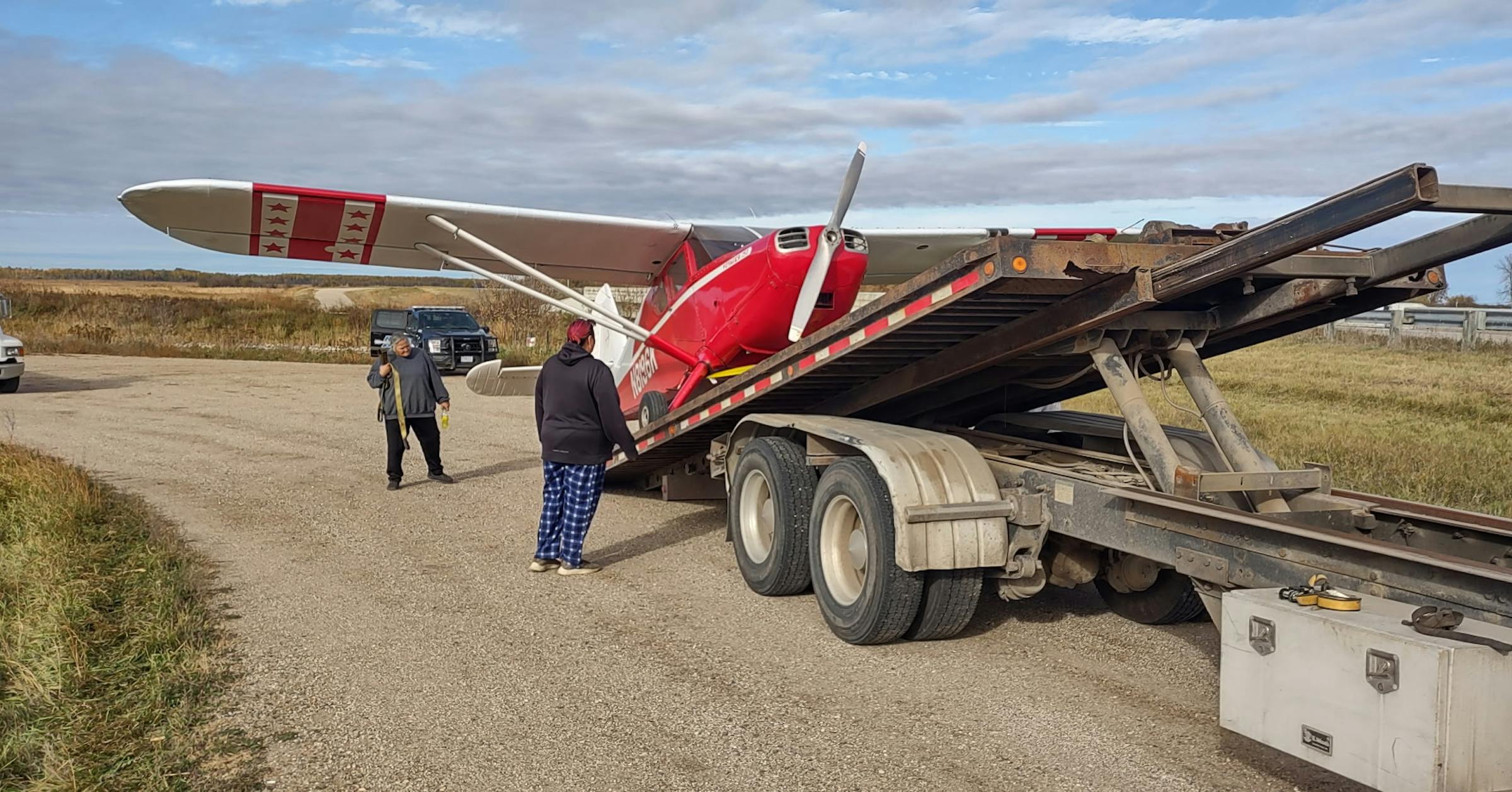Copyright Star Tribune

With about 30 years of flying experience, off and on, he did what he said any pilot would do, he said: He landed on the paved road, which was clear of traffic. He flagged down a truck, and it turned out to be a neighbor from Roseau, who called police for help. A couple of tribal police officers and conservation officers showed up, he said, and everything went like clockwork until the officers checked in with their office. They came back, Smedsmo said, with bad news. Smedsmo had violated the tribe’s 1978 resolution prohibiting any aircraft from flying at an altitude of less than 20,000 feet above Red Lake tribal lands. They confiscated the red-and-white four-seater he’d used to fly his wife and teenage daughters on so many family outings. This was flabbergasting. Flight maps show rare no-fly zones and military flying zones, but he said he had never seen a single map that indicated that flying above Red Lake was off-limits. But there was nothing to be done. Even though he had landed on a state-funded highway, he was within the bounds of the Red Lake Nation, one of 574 sovereign tribes in the U.S. He had no way to stop them from hauling away his airplane. Two weeks later, the airplane remains there, to the ire of pilots around the state. The Minnesota Pilots Association warned its members to avoid flying over Red Lake. Red Lake Nation leaders didn’t return my messages, so I can’t share their thoughts. Was the confiscation a flex to remind everyone of their sovereignty, after which they will return Smedsmo’s airplane? It’s not the first time a tribe has tangled with a private pilot. In 2009, the Hualapai Tribe of Arizona confiscated a paraglider used by a tour guide to fly over tribal land to take photos. The case was settled, so although the Federal Aviation Administration says tribes have no control over airspace, there was never a court decision on it. Red Lake’s 1978 resolution was passed to prevent all aircraft, especially military planes, from crossing above the Red Lake Nation to protect its wildlife and 6,000 residents from the effects of high-speed, low-altitude flights, according to the resolution. It apparently hasn’t worked, as tribal members have complained online about frequent aircraft sightings. I’m trying to understand why the tribe feels it’s justified in claiming 20,000 feet of airspace, when 500-1,000 feet is more in line with private land rights, and why it is punishing a pilot who had to make a lifesaving landing. Their move might seem needlessly antagonistic, but then, too, I’m sure it’s meaningful for the tribe to be the one holding the cards when for so much of their history they have been pushed around. “Pilots should treat this airspace as off limits because it is,” one Red Lake resident commented. “Is it ok to fly into another country without prior permission? No. ... This is a way of enforcing our treaty rights.” Unique among Minnesota tribes, the Red Lake reservation remains intact, its ancestors having wisely and skillfully fended off congressional attempts to divide it the way the government had other tribes. Red Lake lands are not owned by individuals; the tribe holds them in common. The tribe has the right to decide who gets to visit or live on the reservation, and it’s not subject to state government or courts. It governs itself, only subject to federal law. I don’t think anyone would begrudge the tribal members for exercising these rights. I admire them for hanging onto their values and their privacy in the face of intense outside pressure. Yet even Red Lake, as independent as it is, needs the outside world at times. One of its chief goals is to regain full ownership of Upper Red Lake, which it steadfastly maintains was never ceded to the government. It is a claim that deserves rigorous review and, if they are correct, political action. But banning and seizing aircraft won’t win anybody over. A moment that could have built bonds between two cultures ended up driving more division, as reflected in mutually hostile comments on social media. Smedsmo has a Nov. 3 court date in Red Lake. He plans to represent himself. He worries that improper storage may have exposed his aircraft to damaging rains or wind. Before the emergency landing, it was worth about $35,000, he said. Now, with a dead engine and possible damage, he guesses it is worth significantly less. If Red Lake can ban aircraft, can it also seize semis that travel through on roads not designated for truck traffic? If Red Lake can ban aircraft, what’s to prevent other sovereign nations in Minnesota and the U.S. from doing the same? “I’m telling pilots to avoid flying over Red Lake reservation or any reservation at that point until this is clarified, because you know you never can predict when you’re going to have an engine failure,” said Randy Corfman, president of the Minnesota Pilots Association. “It’s going to impact not only pilots in Minnesota, but it’s going to impact pilots all over the country.” This could, ultimately, be a question for federal courts. Tom Heffelfinger, a former U.S. Attorney in Minnesota who worked on cases involving Indian Country, said that if Smedsmo doesn’t prevail in tribal court, he could appeal to the federal courts to get his plane back. If it ever reaches that level, both sides have something to lose. It would no doubt cost Smedsmo considerable time, aggravation and money. But it could also cost the tribe their jurisdiction over their airspace. Reaching an agreement at the tribal level could leave both sides feeling they have won. Smedsmo could get his plane back. And private airplanes would exercise greater caution in flying over the sovereign nation of Red Lake.



